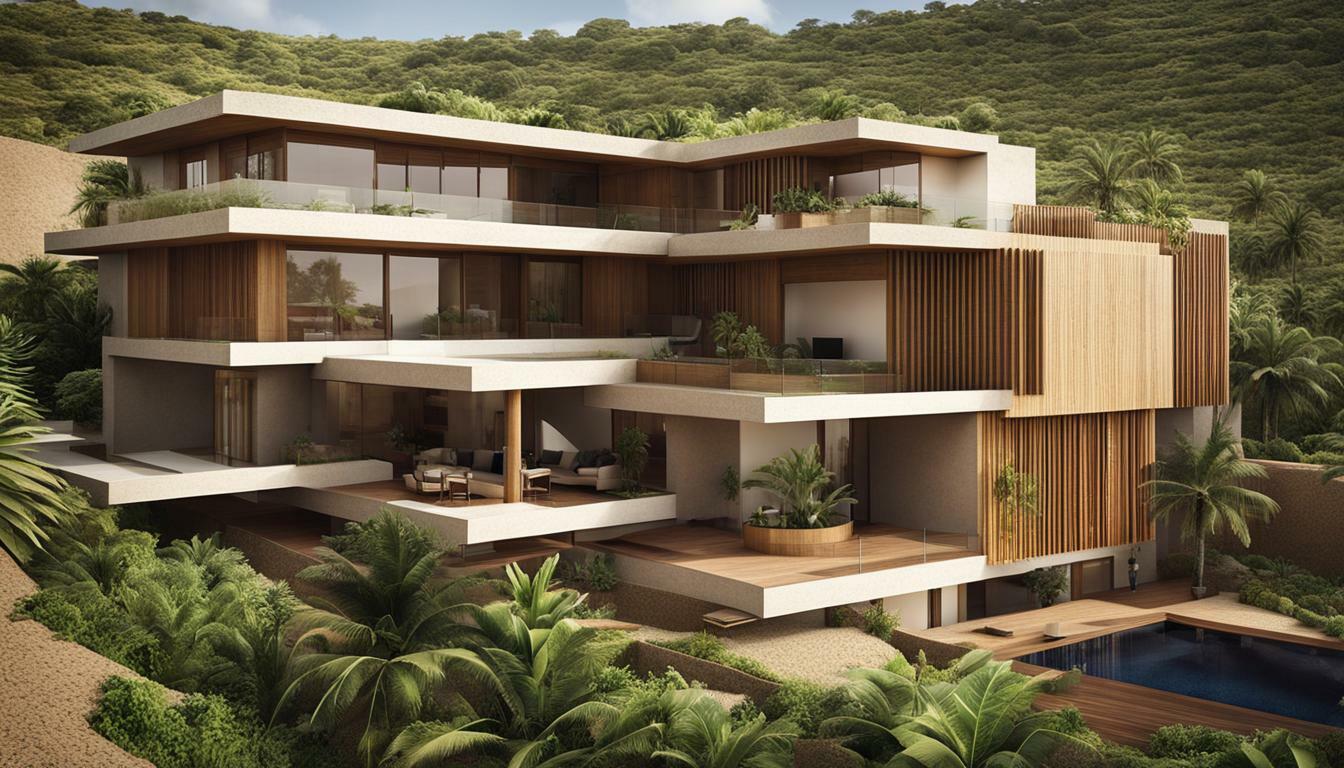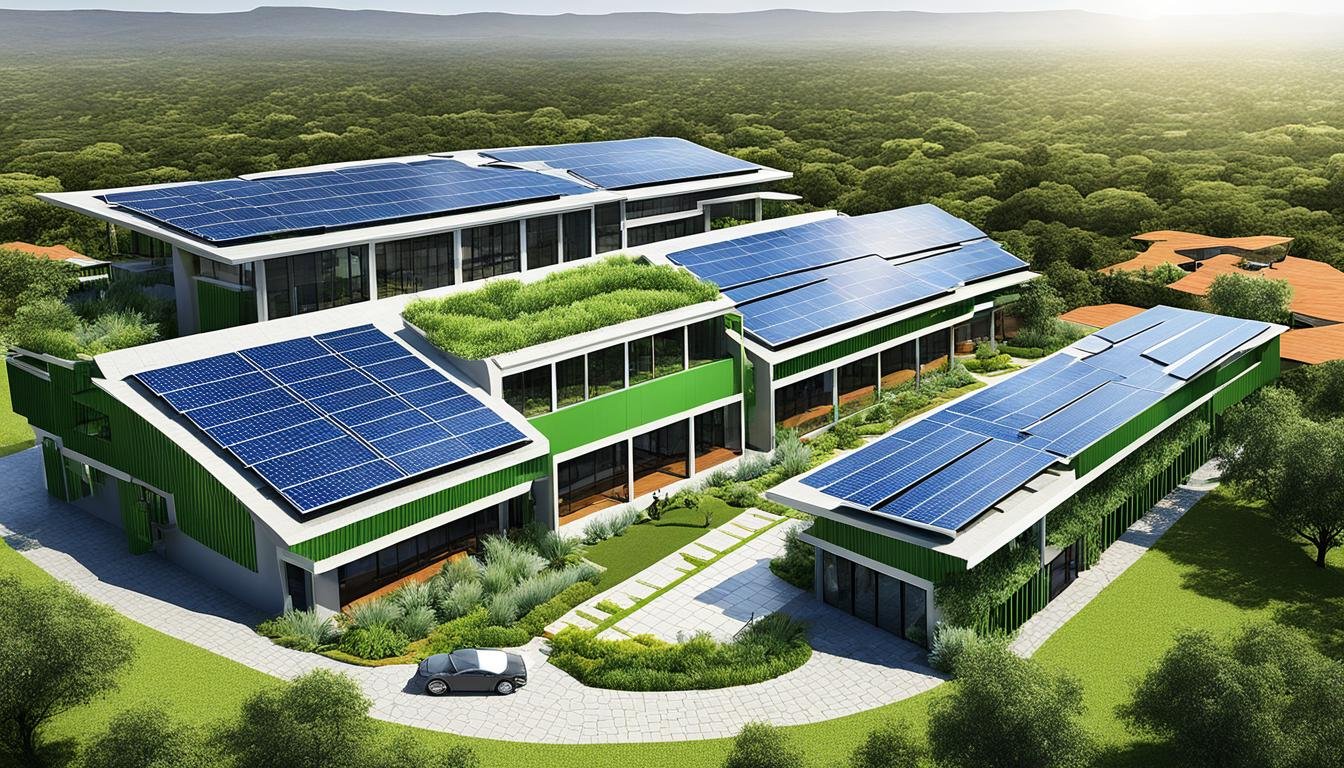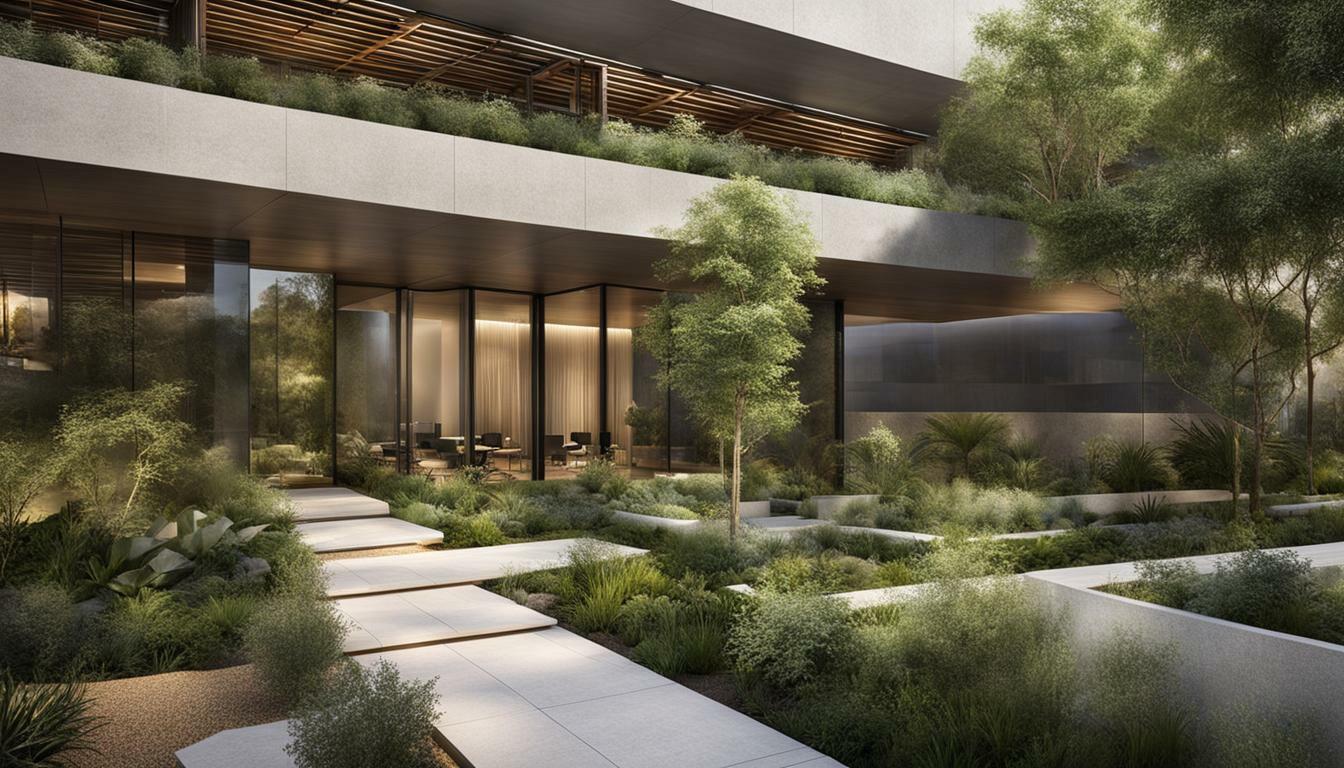Cambodia Green Building History
Over the years, Cambodia has taken significant steps towards promoting sustainable architecture and eco-friendly construction practices. The country’s history of green building is a testament to its commitment to environmental conservation and sustainable development.
The evolution of green building in Cambodia has been marked by several initiatives, milestones, and innovations. From early stages of eco-conscious building techniques to the adoption of green construction practices, Cambodia has emerged as a leading advocate for sustainable architecture in the region.
Key Takeaways:
- Cambodia’s history of green building demonstrates its commitment to environmental conservation and sustainable development
- The evolution of sustainable architecture in Cambodia has seen the adoption of various eco-conscious building techniques and green construction practices
- The country has implemented several green building initiatives to promote sustainable development in the construction industry
- Cambodian construction practices prioritize the use of sustainable materials, energy-efficient designs, and waste reduction strategies
- The development of sustainable infrastructure in Cambodia emphasizes the incorporation of green design principles in urban planning, transportation systems, and public spaces
Evolution of Sustainable Architecture in Cambodia
Cambodia’s architectural landscape has undergone a significant transformation over the past few decades, with a growing focus on sustainable architecture. With the increasing demand for eco-friendly construction practices, sustainable architecture has become an integral part of the country’s urban development. In this section, we will explore the evolution of sustainable architecture in Cambodia, from its early stages to its current state.
The adoption of sustainable architecture in Cambodia began in the early 2000s. At that time, architects and builders started experimenting with eco-conscious building techniques as a response to the country’s unsustainable development practices. This led to a growing awareness of the need for sustainable architecture, and architects and builders began incorporating green construction practices into their designs.
Today, Cambodia’s architecture industry is characterized by a growing interest in sustainable development, with many architects adopting green design principles. Architects are utilizing environmentally friendly materials such as bamboo, reclaimed wood, and recycled plastic to build structures that are both aesthetically pleasing and sustainable.
| Sustainable Architecture Practises | Description |
|---|---|
| Passive Design Strategies | Eco-conscious building techniques that take advantage of natural resources such as sunlight and wind to reduce the need for artificial energy sources. |
| Green Roofs and Walls | The use of rooftop and vertical gardens to reduce energy usage and improve air quality. |
| Energy-Efficient Designs | Designs that utilize renewable energy sources to reduce the carbon footprint of buildings. |
The adoption of sustainable architecture has led to significant advancements in eco-friendly construction practices, with architects and builders utilizing energy-efficient designs, waste reduction strategies, and green technologies to reduce the negative impact of construction on the environment.
Case Study: Vann Molyvann’s Work
Vann Molyvann was a Cambodian architect and urban planner who is considered to be one of the pioneers of sustainable architecture in Cambodia. His work is characterized by a focus on local resources, passive design strategies, and the integration of traditional Khmer architectural elements. His most famous project is the Olympic Stadium in Phnom Penh, which reflects his commitment to sustainability and innovation.
Overall, the evolution of sustainable architecture in Cambodia has been characterized by a growing interest in eco-conscious building techniques and a recognition of the need for sustainable development. As architects continue to adopt green design principles, Cambodia’s architectural landscape will continue to evolve towards a more sustainable future.
Green Building Initiatives in Cambodia
Cambodia has witnessed a surge in green building initiatives over the past few years, signaling a promising shift towards sustainable construction practices. The government, industry professionals, and organizations have come together to promote environmentally friendly development in the country, with several notable achievements to their credit.
One of the prominent initiatives in this regard is the Green Building Certification Program developed by the Ministry of Land Management, Urban Planning and Construction (MLMUPC). The program aims to encourage the adoption of sustainable design principles and practices in building projects, as well as to recognize and reward green building efforts through certification.

The MLMUPC has also established the Sustainable Building Technical Working Group, which provides technical assistance and guidance to stakeholders in the construction industry. The group focuses on promoting green materials, energy-efficient systems, and waste reduction strategies, among other initiatives.
Other organizations have also contributed to green building efforts in Cambodia. The Cambodia Green Building Council, for instance, provides training, education, and support to architects, engineers, and builders in promoting sustainable design and construction practices. The organization has also partnered with the International Finance Corporation (IFC) to develop a green building toolkit for the country.
Industry professionals have also taken up the mantle of promoting eco-friendly construction practices in Cambodia. The Hagar Restaurant and Bakery in Phnom Penh, for example, is a notable green building project that utilizes sustainable materials, energy-efficient lighting, and water-saving fixtures.
Moreover, the construction industry has also focused on reducing the carbon footprint of building projects. For instance, the Sokha Siem Reap Resort and Convention Center has incorporated green technologies such as solar water heaters and rainwater harvesting systems to minimize its environmental impact.
Overall, Cambodia has made significant progress in its green building efforts through the concerted actions of government, industry, and civil society. The country’s initiatives in sustainable architecture and eco-friendly construction practices serve as an inspiring example for the region and beyond.
Eco-Friendly Construction Practices in Cambodia
When it comes to eco-friendly construction in Cambodia, sustainable materials and energy-efficient designs are becoming increasingly popular. Builders are placing a greater emphasis on reducing waste, conserving natural resources, and minimizing the carbon footprint of their construction projects. One of the key materials used in eco-friendly construction in Cambodia is bamboo. A highly sustainable and renewable resource, bamboo is a versatile construction material that has been used for centuries in Cambodia. Its strength, lightness and flexibility make it an excellent alternative to traditional building materials, and it can be used for everything from wall panels to flooring.
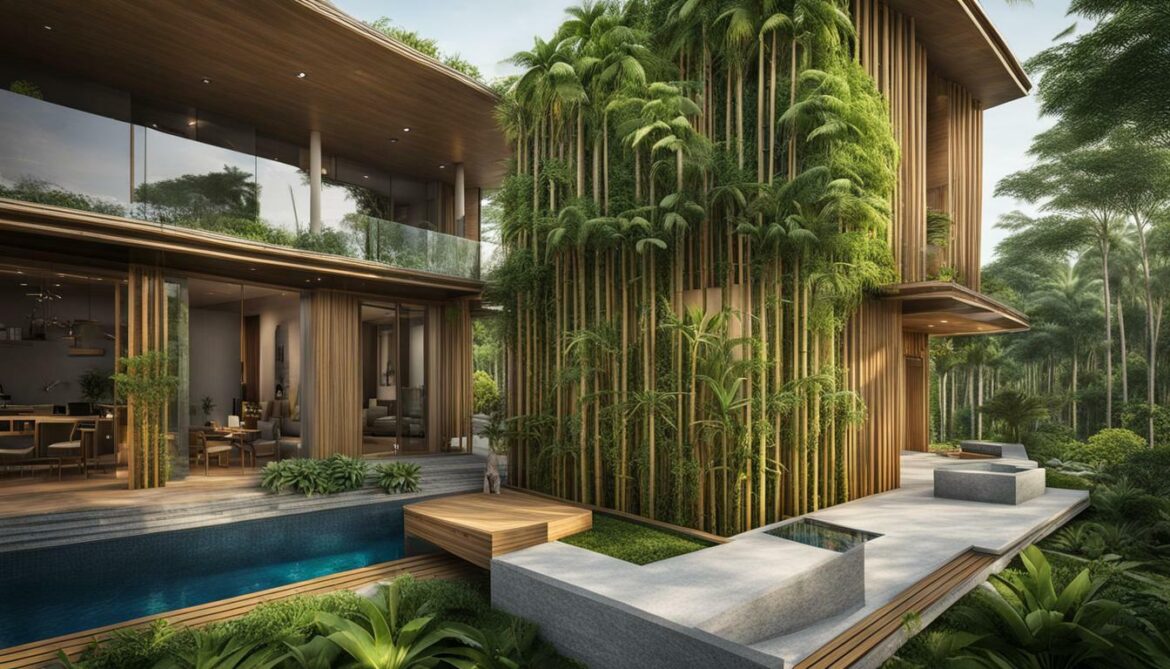
Another eco-friendly construction practice in Cambodia is the use of green roofs. By installing living plants on rooftops, buildings can reduce their energy consumption, absorb rainwater, and create new green spaces in urban areas. The National Institute of Statistics estimates that Cambodia has over 3,000 hectares of flat roofs that could be used for green roofs. The government’s Green Building Code, released in 2018, encourages the use of these roofs in new construction projects.
Efficient use of water resources is also essential in eco-friendly construction in Cambodia. One way to conserve water is through the use of greywater systems. These systems collect and treat water from sinks, showers, and washing machines, which can be reused for non-potable purposes such as toilet flushing and irrigation. This reduces the demand for fresh water and minimizes waste.
Finally, the integration of renewable energy systems is becoming increasingly common in eco-friendly construction in Cambodia. Solar panels, for example, can be used to power buildings and reduce reliance on non-renewable energy sources. Many eco-conscious builders are also incorporating passive design strategies, such as strategic building orientation and shading, to reduce the need for artificial cooling and heating systems.
Environmental Practices in Cambodian Construction
Environmental practices are becoming increasingly important in the construction industry in Cambodia, as the country strives towards sustainable development. The adoption of eco-friendly construction practices not only benefits the environment but also contributes to the creation of healthier and more livable communities.
Minimizing the carbon footprint of construction sites is a key priority in Cambodian construction. This involves reducing the amount of energy consumed during the building process and minimizing waste. Builders are adopting energy-efficient designs, utilizing sustainable materials, and implementing waste reduction strategies to achieve sustainable outcomes.
| Eco-friendly Construction Practices | Description |
|---|---|
| Passive Design Strategies | Builders are incorporating design elements that make use of natural light and ventilation, reducing the need for artificial lighting and mechanical ventilation systems. |
| Renewable Energy Integration | Builders are integrating renewable energy sources such as solar panels, reducing the need for grid electricity and decreasing the carbon footprint of construction sites. |
| Waste Reduction Strategies | Builders are implementing strategies to reduce waste generated during construction, such as using recycled materials or donating unused materials to charities and community organizations. |
The importance of preserving natural resources is also a major consideration in Cambodian construction. Builders are taking steps to minimize the impact of construction on the environment, including reducing deforestation, protecting wetlands and waterways, and minimizing soil erosion.
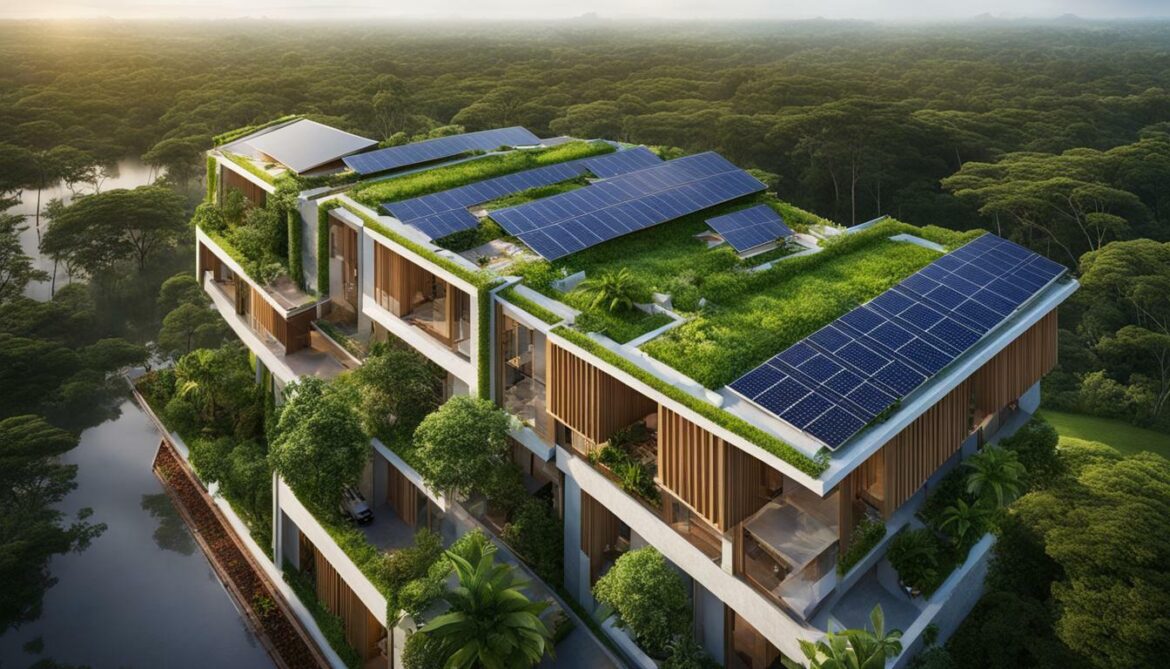
Green building certifications, such as the Green Building Council of Cambodia’s Building Energy Efficiency Certification (BEEC) and the LEED certification, are gaining popularity in the country. These certifications recognize buildings that meet high standards in energy efficiency, sustainability, and environmental practices.
As Cambodia continues to prioritize sustainable development and eco-conscious building techniques, it is on track to become a leading example in the region for environmentally friendly construction practices.
Cambodian Sustainable Infrastructure
Cambodia has made significant progress towards sustainable infrastructure in recent years. The country has adopted green design principles in urban planning, transportation systems, and public spaces to create a more environmentally friendly built environment. This focus on sustainable infrastructure has led to the implementation of several notable initiatives aimed at reducing the country’s carbon footprint and preserving natural resources.
One such initiative is the Bike Sharing Program in Phnom Penh, which provides residents with a sustainable and environmentally friendly form of transportation. The program allows users to rent bicycles for a nominal fee, reducing traffic congestion and air pollution in the city.
Another significant development in Cambodian sustainable infrastructure is the construction of the new Phnom Penh International Airport. The airport features state-of-the-art energy-efficient designs, uses sustainable materials, and integrates green technologies, such as solar panels and rainwater harvesting systems. The airport’s eco-friendly features have earned it a Gold certification from the Leadership in Energy and Environmental Design (LEED) program, a globally recognized green building certification.
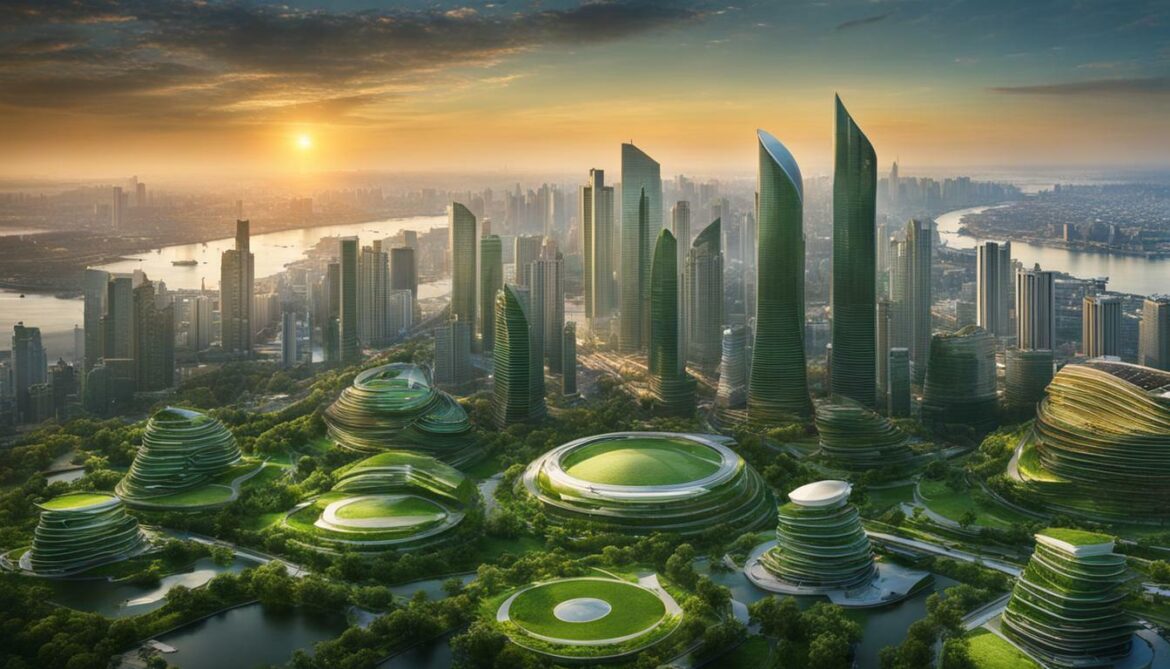
The Cambodian government has also prioritized sustainable infrastructure in its long-term planning and development strategies. In 2019, the government launched the Sustainable Infrastructure for Competitive Economy project, aimed at promoting sustainable infrastructure and private sector investment in the country. The project focuses on developing sustainable transport, energy, and water infrastructure, with the goal of reducing greenhouse gas emissions and enhancing environmental sustainability.
Overall, Cambodia’s commitment to sustainable infrastructure is evident in its various initiatives and projects. The country’s focus on green design principles and sustainable technologies is creating a more environmentally friendly built environment, which is vital for future generations.
Green Construction Milestones in Cambodia
Cambodia has achieved several significant milestones in the promotion and adoption of green building practices. Notably, in 2018, the country’s first green building certification program, the “Green Building Code,” was launched, which provides guidelines and standards for sustainable construction in Cambodia. This initiative was spearheaded by the Ministry of Land Management, Urban Planning, and Construction, in collaboration with the International Finance Corporation and the Cambodia Green Building Council.
Since then, several notable projects have been certified under the Green Building Code, including the Vattanac Capital Tower and the Chip Mong Insee Cement Office. These buildings have demonstrated exceptional energy efficiency, water conservation, and waste reduction practices, setting the benchmark for green construction in Cambodia.
Moreover, the Cambodia Green Building Council (CGBC) has played a pivotal role in promoting sustainable architecture in the country. The CGBC is a non-profit organization that aims to raise awareness of green building practices and provide training and education to professionals in the building industry. The council has also been instrumental in organizing the annual Cambodia Green Building Conference, which brings together industry experts, policymakers, and stakeholders to discuss the latest trends and developments in green construction.
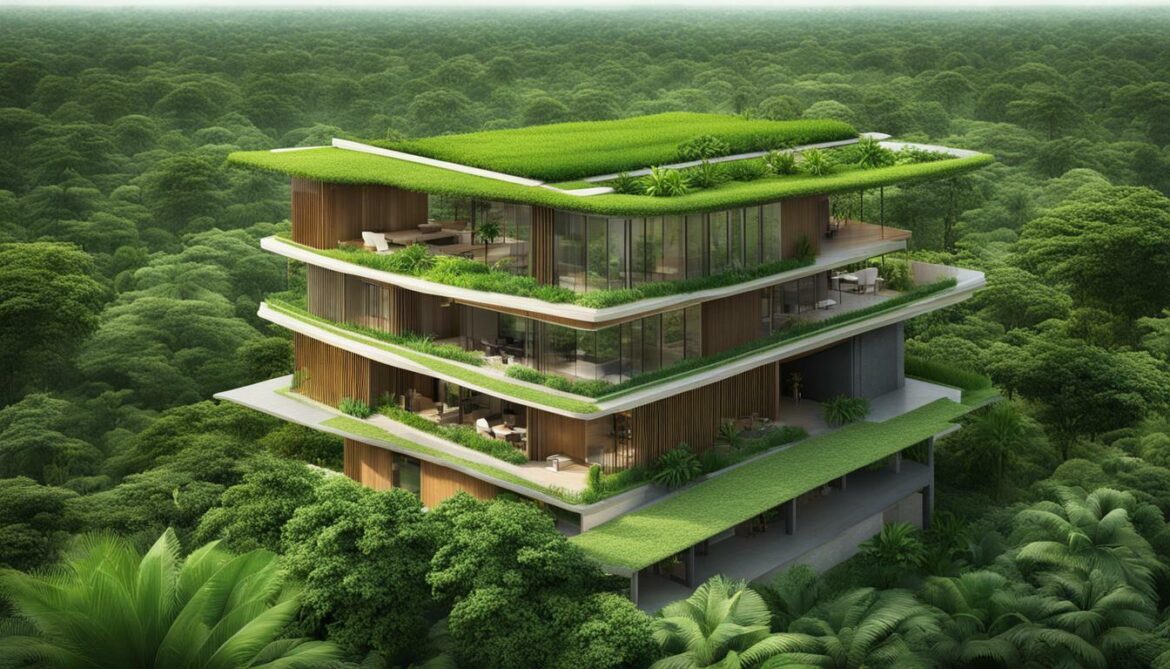
Another significant milestone was the construction of Cambodia’s first eco-friendly factory, built by the B.B. Building Materials Company in 2017. The factory was constructed using sustainable materials and features energy-efficient designs, including solar panels and natural ventilation systems. This project showcases the potential for integrating green technologies in industrial development and has inspired other companies to adopt eco-conscious building techniques.
Overall, Cambodia has made significant strides in promoting sustainable development and eco-friendly construction practices. The country’s commitment to green building initiatives and sustainable infrastructure has been recognized internationally, with several projects receiving awards and certifications for outstanding environmental performance. As Cambodia continues to prioritize sustainable development, it serves as an inspiring example for other nations in the region and beyond.
Eco-Conscious Building Techniques in Cambodia
As Cambodia continues to prioritize sustainable development, architects and builders have adopted innovative eco-conscious building techniques to create environmentally friendly structures.
One such technique is the use of passive design strategies that take advantage of natural elements such as sunlight, wind, and vegetation to regulate indoor temperature and lighting, reducing the need for energy-intensive cooling and lighting systems.
Another eco-conscious building technique is the incorporation of renewable energy sources, such as solar panels and wind turbines, to power buildings. These technologies not only reduce reliance on non-renewable energy sources but also lead to long-term cost savings.
The use of sustainable materials is also a critical component of eco-conscious building in Cambodia. Reclaimed and recycled materials, such as reclaimed wood and recycled metal, can be used to reduce waste and promote a circular economy. Locally sourced materials, such as bamboo and thatch, can also be utilized to minimize transportation emissions.
Waste reduction strategies are another important aspect of eco-conscious building in Cambodia. Builders can reduce waste by repurposing materials and implementing systems for waste sorting and recycling on construction sites.
Finally, integrating water-saving features, such as low-flow toilets and rainwater harvesting systems, can promote water conservation in buildings.
By adopting these eco-conscious building techniques, Cambodia is setting an example for sustainable development and promoting a more environmentally friendly built environment.
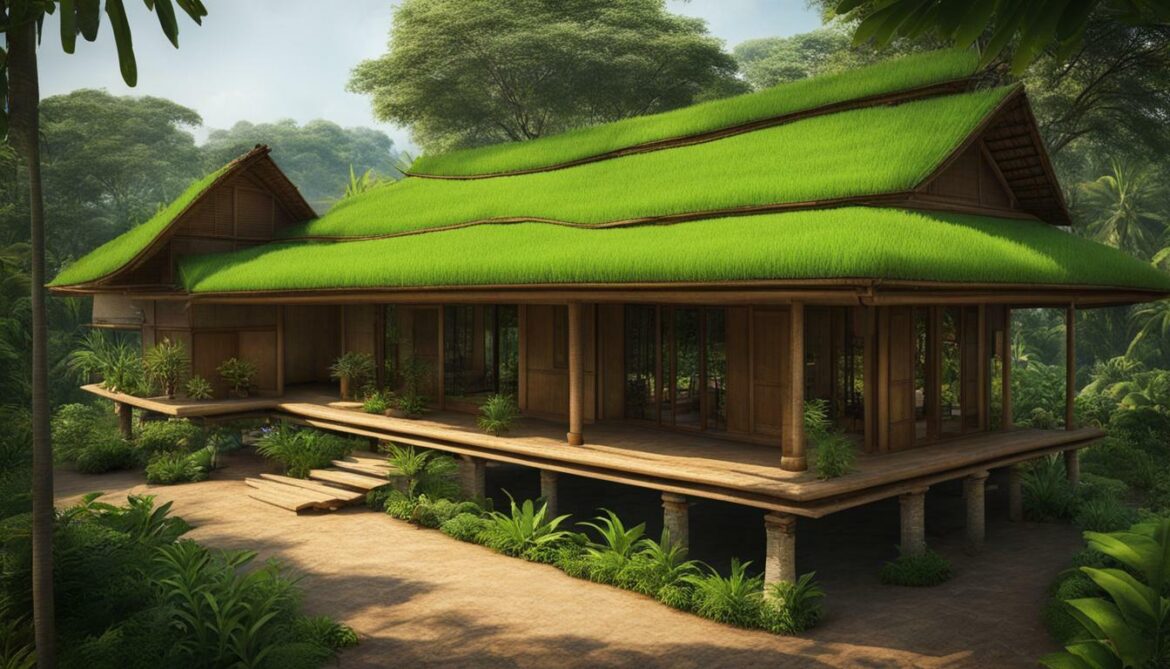
In conclusion, Cambodia has made significant strides in adopting green building practices and promoting sustainable architecture. The country’s commitment to environmental stewardship and eco-friendly construction techniques is evident in its green building initiatives, sustainable infrastructure, and eco-conscious building techniques. As Cambodia continues to prioritize sustainable development, it serves as an inspiring example for other nations in the region and beyond.
FAQ
What is the history of green building in Cambodia?
The history of green building in Cambodia explores the evolution of sustainable architecture and eco-friendly construction practices in the country over time. We delve into the various initiatives and milestones that have contributed to the advancement of green building in Cambodia.
How has sustainable architecture developed in Cambodia?
Sustainable architecture in Cambodia has evolved over the years, with the adoption of eco-conscious building techniques and the integration of green construction practices. We discuss the stages of development and the impact of sustainable architecture on the country’s architectural landscape.
What are the green building initiatives in Cambodia?
Cambodia has implemented various green building initiatives to promote sustainable development in its architecture. We highlight the efforts made by government bodies, organizations, and industry professionals in driving eco-friendly construction practices in the country.
What are the eco-friendly construction practices in Cambodia?
Eco-friendly construction practices in Cambodia encompass the use of sustainable materials, energy-efficient designs, and waste reduction strategies. We explore the strategies and techniques employed by the construction industry to minimize environmental impact.
What environmental practices are adopted in Cambodian construction?
Cambodian construction prioritizes environmental practices such as preserving natural resources, minimizing carbon footprint, and integrating green technologies. We discuss the importance of these practices in creating a sustainable built environment.
How is sustainable infrastructure developed in Cambodia?
The development of sustainable infrastructure in Cambodia involves incorporating green design principles into urban planning, transportation systems, and public spaces. We highlight the efforts made to create an environmentally friendly built environment in the country.
What are the green construction milestones in Cambodia?
Cambodia has achieved significant green construction milestones through notable projects, certifications, and awards. We showcase these accomplishments that recognize the country’s commitment to sustainable building practices.
What eco-conscious building techniques are used in Cambodia?
Cambodian architects and builders utilize various eco-conscious building techniques, including passive design strategies and renewable energy integration. We explore these innovative approaches in creating sustainable structures.
You may also be interested in Cambodia Top Green Buildings.




